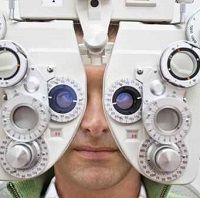Article
Scar Location Is a Key Indicator of Visual Acuity after Anti-VEGF Therapy for Wet Age-Related Macular Degeneration
Author(s):
A retrospective chart review study showed that the location of subfoveal fibrovascular scarring in relation to the retinal pigment epithelium correlated with visual outcome in eyes successfully treated with anti-vascular endothelial growth factor agents for neovascular age-related macular degeneration.

The advent of anti-vascular endothelial growth factor (VEGF) therapy has more than halved the incidence of disciform, or subfoveal fibrovascular scars, which are common end results of neovascular (wet) age-related macular degeneration (nAMD). Although vision in patients with these scars tends to be poor, it varies considerably. As a result, optical coherence tomography (OCT) has been used to determine which lesion characteristics correlate with visual outcome.
Regardless of whether scar tissue is present, the integrity of outer retinal structures (ie, the external limiting membrane and ellipsoid layer) has been associated with better visual outcomes. However, the specific factors that help to preserve these structures have been unclear. Moreover, OCT studies have failed to confirm the histologic association between intact retinal pigment epithelium (RPE) and preservation of these structures.
To determine whether the location of the subfoveal scar in relation to the RPE as confirmed by OCT correlates with visual acuity, a Canadian team retrospectively reviewed the records of patients treated with the anti-VEGF agents bevacizumab (Avastin/Roche) or ranibizumab (Lucentis/Roche) between June 2007 and December 2013 in a single clinical practice. This practice used a treat-and-extend strategy with a loading dose of three monthly injections then extension by two-week intervals.
The study included 56 eyes (56 patients) with a subfoveal disciform scar after anti-VEGF therapy. Initial and final visual acuity, results of fluorescein angiography, and scar characteristics confirmed by spectral domain OCT were retrospectively reviewed for these eyes. Results of the study were published in a recent issue of Retina.
Of the eyes evaluated, 35 (62.5%) had scars that were entirely below the RPE, and 21 (37.5%) had scars with some subretinal component. The latter group included eyes with scars that were purely subretinal, that had some subretinal components, or that had no RPE.
Although mean visual acuity was initially similar between these groups, after anti-VEGF therapy it was better in the group with sub-RPE scars than in the group with subretinal component scars (P = 0.001). In addition, the external limiting membrane, ellipsoid layer, and central retinal thickness were better preserved to a statistically significant degree in eyes with sub-RPE scars than in eyes with subretinal component scars, which were more likely to have tubulations in the central retina (P = 0.004) than eyes with sub-RPE scars. These tubulations indicate disorganization of the outer retina and photoreceptors, the study team noted.
These findings led them to conclude that, after treatment with anti-VEGF agents, eyes with subfoveal scarring under an intact layer of RPE had better-preserved outer retinal structures and better vision than eyes with scars that had a subretinal component.
Although disciform scars are associated with poor vision, many patients in this study had relatively good vision despite sub-RPE scars. This finding may have resulted because anti-VEGF therapy was begun early in the course of nAMD. According to the study team, early treatment promotes rapid fibrosis of choroidal neovascular tissue, which appears to limit the extent of RPE destruction and thus preserve outer retinal structures and vision.
2 Commerce Drive
Cranbury, NJ 08512
All rights reserved.



